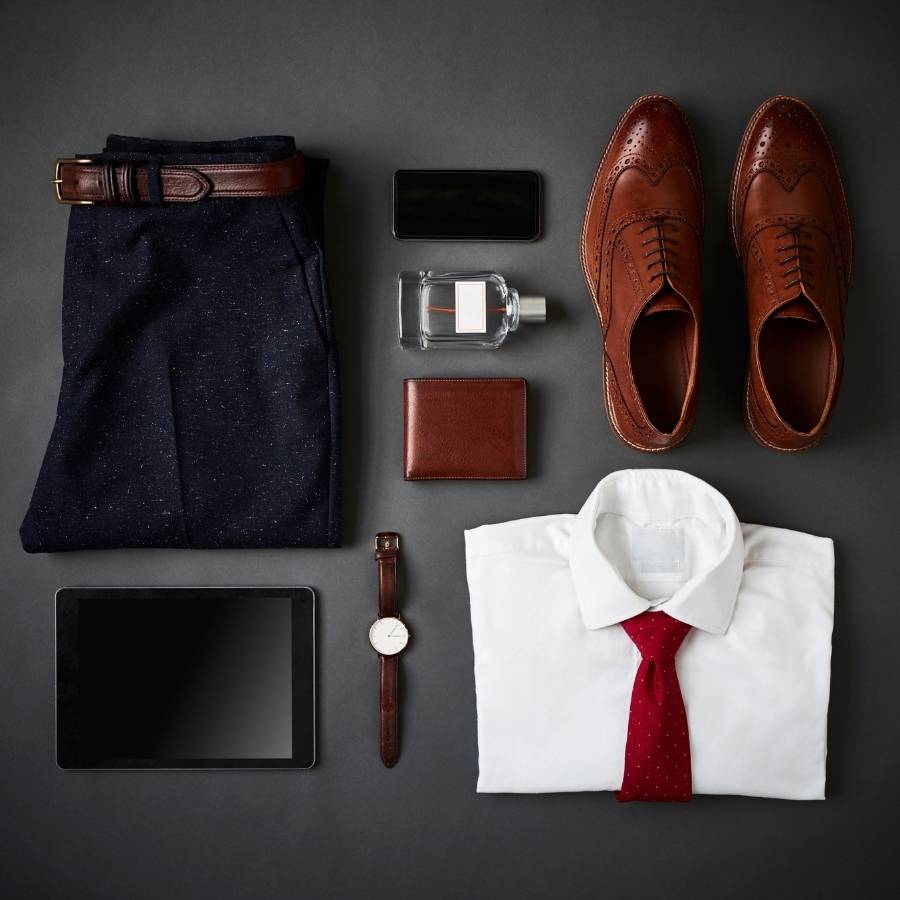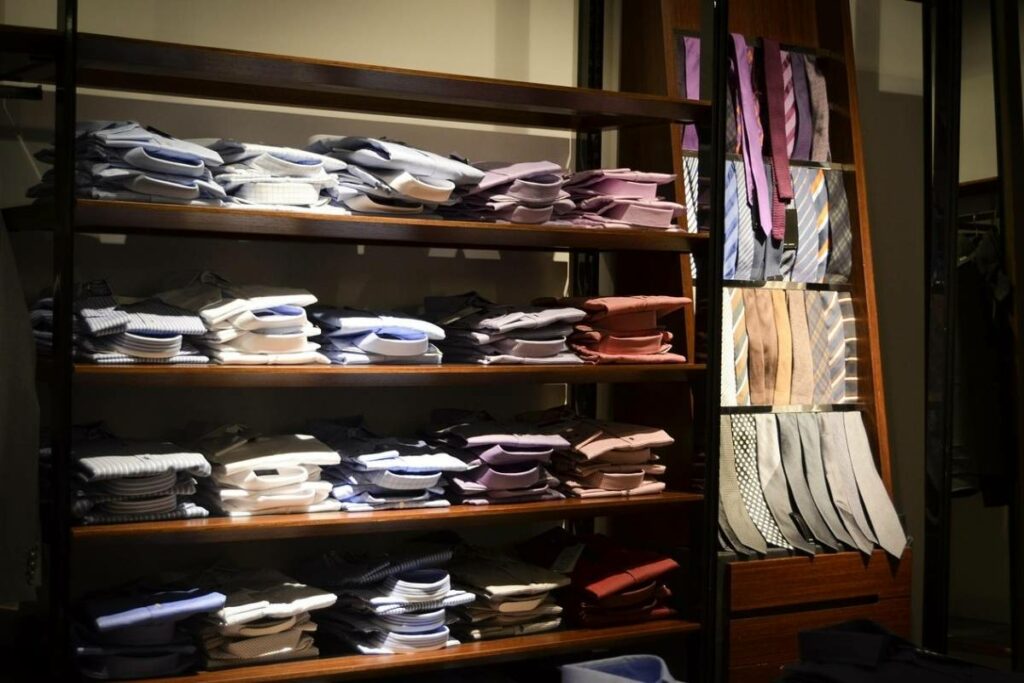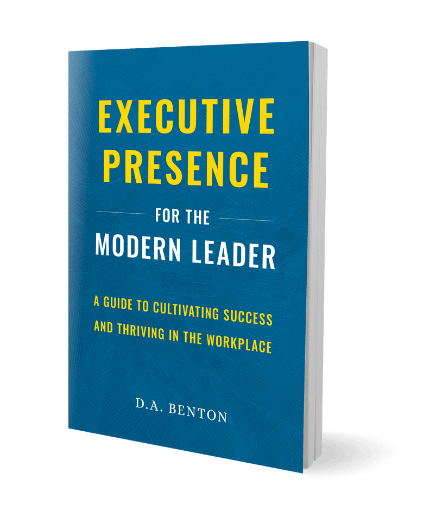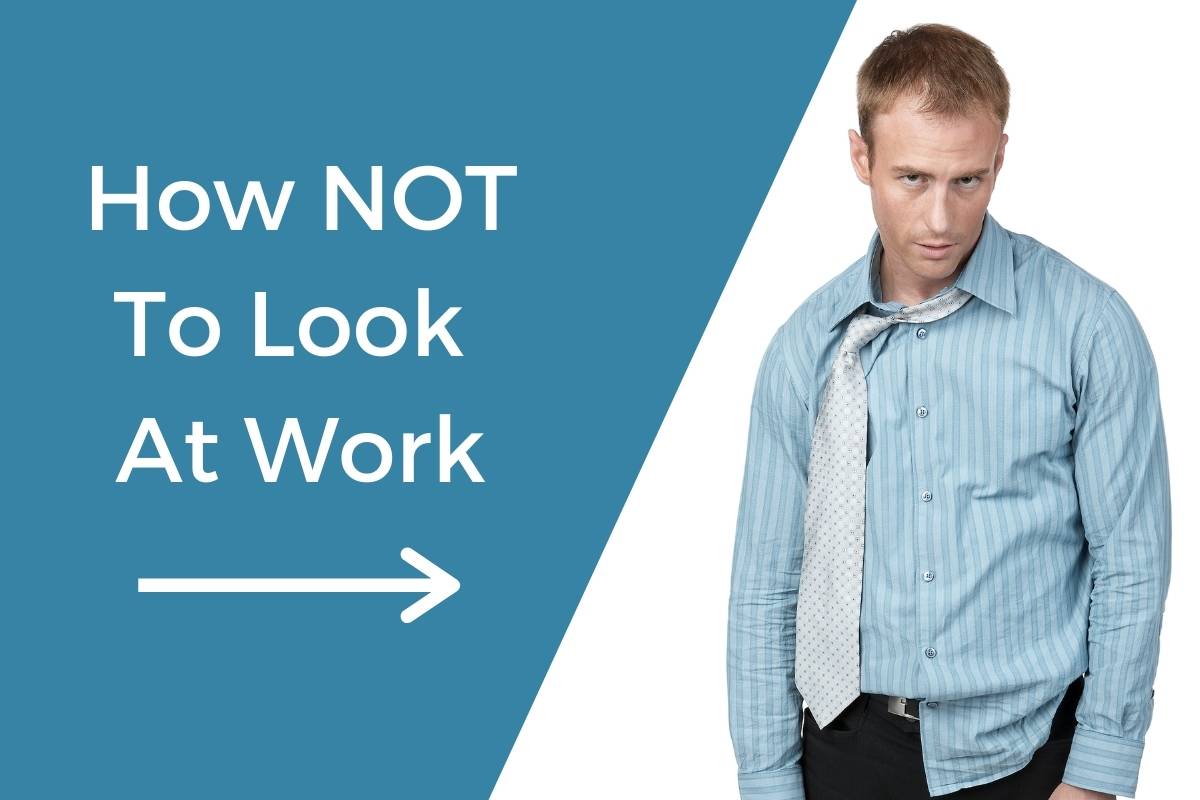As workplaces begin to open up again, now seems like a good time to remember that, unfair though it may be, people often form impressions based solely on what they see. It’s to your benefit to avoid having a sloppy appearance at work.
The following excerpt from my newest book Executive Presence For The Modern Leader offers some guidelines on how to develop a style that is your own.
Style/Wardrobe

In a sense, clothes are the most superficial of all aspects of image and reputation. Anyone can put on a “good suit of clothes” and look like a stereotypical leader from a business magazine. But it’s also one of the easiest things to change, if necessary. This is one area in which you don’t really want or need to “stand out” in the colorful sense of the term; instead, you’ll want to pay attention to what those you admire are wearing, and dress to that level.
It’s easy to acquire the look that fits your company culture, industry, and geographic climate. Watch what leaders in the company wear. Don’t copy them, but use their style as a template. There’s a saying: Don’t dress for the job you have; dress for the job you want. This is one area where you don’t want to stand out. It’s a shallow reason to dismiss someone because of their clothes, but it happens.
Think of it this way: In every sport, there are uniforms. In many jobs and businesses, there are also uniforms, whether it’s explicit or implicit. Executive presence involves dressing like part of the team. It’s okay to add a personal touch of flair so you can feel good about yourself, but discretion is key.
People see your posture, face, grooming, and clothes roughly in that order, but they go through those judgments in a nanosecond. The way you look makes people draw conclusions, from which they either want to know more about you or lose interest in you.
When job interviewing, you likely put in extra effort with your appearance. If you get hired from that interview, be assured that they are going to expect you to show up every day looking like you did in the interview, because that image is what they hired. That said, it’s okay to overdress for an interview when in doubt. Better to show up in a suit even if you discover the office is generally business casual. After they hire you, they’ll joke that you can “lose the tie.”

One of the best reasons to pay attention to your wardrobe is that what you wear deeply affects you, much more deeply than it affects those around you. You want to wear clothes that make you feel confident. That’s why dress matters, even if you’re working remotely. If you’re not wearing pants during a video meeting, you’re not going to feel or act like you’re wearing pants. My advice here: Wear the pants.
Designers and brands understand that clothes and style affect your behavior. This quote from Departures magazine in an article about expensive watches is both humorous and telling: “A man, for example, wearing a mechanical watch that displays a lot of complications is communicating that he is possessed of an agile mind and part of an intellectual elite equipped to understand the mysteries of time.”
Another statement touting the power of fashion appeared in Vegas Magazine¸ which featured a designer’s line of leather jackets: “I like to think of the man feeling like a warrior—of work, of love, of life—when he’s wearing one of these pieces.” In the interest of executive presence, you might take this as a disclaimer to wear the clothes; don’t let them wear you.
The overarching point here is, dress smartly, but don’t let your clothes be more interesting than you are. If your clothing is distracting in any way, it’s going to be harder to get people to focus on what you’re saying. All your clothes should say about you is “dressed for success.”
Dress smartly, but don’t let your clothes be more interesting than you are. If your clothing is distracting in any way, it’s going to be harder to get people to focus on what you’re saying. Avoid Having A Sloppy Appearance At Work… Share on XStyle/Wardrobe Exercise: Decipher Your Closet
This exercise will require some real objectivity on your part.
- Go to your closet and pull out your work clothes.
- Evaluate each piece as to what you might think of the person if you saw someone else wearing it.
- Think about your own motivation in purchasing that item. Did you see a person featured in Forbes wearing something similar, or was it a Kardashian? Was it on sale and that was the motivation?
The point is to think about why you have a piece and what message it sends. Most people in the public eye have someone who puts together their “look,” enabling them to look exactly as they wish to be viewed. You and I don’t have that luxury, but we can use an objective eye to put together our own look.
Style/Wardrobe Exercise: Executive Review
- Choose your favorite three work ensembles, from shirt to shoes. Include all your favorite accessories.
- One outfit at a time, try them on. Stand before a full-length mirror.
- Pretend you are the top executive at your company looking at you. Look with a critical eye toward the clothing. Does it fit properly? Is it worn or faded or pilling? Are your shoes scuffed or stretched out?
- If your assessment is unfavorable, dig deeper in your closet to find a new ensemble that works better.
- Make a promise to mix up your outfits and wear something new and fresh at least once a week. Replace any ill-fitting or worn pieces.
Takeaways

- The appearance you try to project in your image should be as close to who you truly are as possible. Executive presence is not about trying to appear as someone you aren’t; rather, it’s about being confident in your appearance.
- Your reputation is the best business asset you can own.
- Your reputation exists whether you do anything about it or not. But there is much you can do to protect and maintain it. Ultimately, endeavor to actually be what you want to appear to be.
- Refrain from judging others by their looks, habits, and appearances. Let them show their true colors in their words and deeds.
- Look at your digital brand as a reflection of you. Choose your posts and pictures wisely. Update your profile frequently.
- Dress for the job you want, not for the job you have. Your clothes should say “dressed for success.”
If you would like some help in developing a personal brand and refining your appearance, I am here to help. Contact me to discuss executive coaching, or if you have a group of emerging leaders, for a speaking engagement.

New Book Available Now
Order at Amazon or wherever books are sold.

